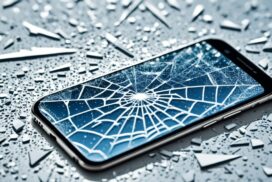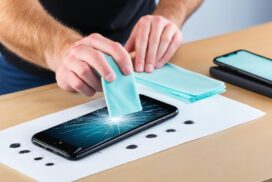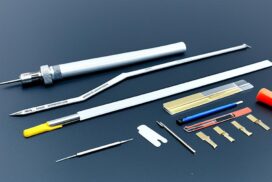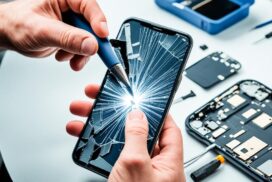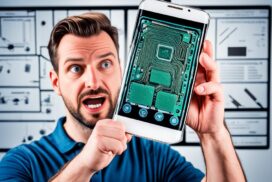Smartphone Battery Connector Repairs for Charging Issues
When it comes to charging issues with smartphones, one common problem that users face is a faulty battery connector. This can lead to difficulties in charging the device and can cause frustration for users. In this article, we will explore the process of repairing smartphone battery connectors and provide solutions for resolving charging issues.
There are several common causes for charging problems in smartphones. These can include hardware issues with the charging cables or charger, issues with the power source, problems with hardware-intensive apps, or even system-wide issues caused by software updates. It is important to troubleshoot these potential causes to identify and resolve the underlying problem.
When a smartphone’s battery connector is damaged or ripped from the motherboard, it requires a skilled repair process to fix the issue. This process involves cleaning up solder pads, installing new solder pads, carefully removing layers of the motherboard trace, overlaying solder onto the exposed trace, and applying epoxy coating to protect the trace. Finally, a new battery terminal connector is soldered back onto the motherboard. This repair process is tedious but necessary for restoring the functionality of the battery connector.
Before jumping into more complex repair processes, it is important to check the cables and adapters being used for charging the smartphone. Frayed or damaged cables can prevent proper charging, and faulty adapters can also cause charging issues. Inspecting these components, trying different cables or adapters, and ensuring a snug connection can help identify and resolve charging problems.
A dirty or debris-filled charging port can lead to charging problems in smartphones. Dust and lint can accumulate over time and hinder the charging process. Cleaning the charging port with a brush, compressed air, or carefully using a toothpick can help remove any particles that may be obstructing proper charging. It is important to be gentle and avoid using hard materials that can damage the port.
In conclusion, smartphone battery connector repair is essential for resolving charging issues. By addressing common causes, such as faulty cables and adapters, and performing necessary repairs, including cleaning the charging port and fixing the battery connector, users can restore the functionality of their smartphones and ensure efficient charging. If all else fails, seeking professional help or considering battery replacement may be necessary. It is important to prioritize proper maintenance and address charging issues promptly to maintain the optimal performance of smartphones.
Common Causes of Charging Problems
In smartphones, charging problems can arise due to various common causes. It is essential to identify these causes to troubleshoot and resolve charging issues effectively.
1. Hardware Issues with Charging Cables or Charger: Faulty charging cables or chargers can be a significant cause of charging problems. Over time, cables may become damaged or frayed, leading to a poor connection or intermittent charging. Similarly, a defective charger can prevent the smartphone from receiving the necessary power.
2. Power Source Issues: The power source can also contribute to charging problems. Using a low-quality power bank or charging from an unstable power outlet can result in inefficient charging or even no charging at all. It is crucial to ensure a reliable power source to avoid such issues.
3. Hardware-Intensive Apps: Certain hardware-intensive apps, such as games or resource-heavy applications, can consume a significant amount of power while running. If these apps are used while charging, the charging process may be slower than usual or may not occur at all. Closing such apps or limiting their usage during charging can help alleviate this issue.
4. System-Wide Issues Caused by Software Updates: Software updates are designed to enhance the performance and features of smartphones. However, in some cases, these updates can introduce bugs or compatibility issues that affect the charging functionality. It is important to stay up-to-date with the latest software updates from the smartphone manufacturer and seek their support if any issues occur.
“Identifying the common causes of charging problems is the first step towards resolving them.”
To summarize, common causes of charging problems in smartphones include hardware issues with charging cables or chargers, power source issues, hardware-intensive apps, and system-wide issues caused by software updates. By understanding these causes, users can effectively troubleshoot and resolve charging problems, ensuring their smartphones receive a reliable and efficient charge.
| Common Causes of Charging Problems | Description |
|---|---|
| Hardware Issues with Charging Cables or Charger | Defective or damaged charging cables or chargers can hinder the charging process. |
| Power Source Issues | Using unreliable power sources, such as low-quality power banks or unstable power outlets, can impact charging efficiency. |
| Hardware-Intensive Apps | Running resource-intensive apps while charging can slow down the charging process. |
| System-Wide Issues Caused by Software Updates | Software updates can sometimes introduce compatibility or bug-related issues that affect charging functionality. |
Identifying the common causes of charging problems is the first step towards resolving them. By addressing these issues, users can ensure a smooth and efficient charging experience for their smartphones.
Repairing the Battery Connector
When a smartphone’s battery connector is damaged or ripped from the motherboard, it requires a skilled repair process to fix the issue. This process involves several steps to ensure the proper functionality of the battery connector.
Firstly, the repair technician will clean up the solder pads, removing any existing solder or debris that may interfere with the repair process. This step is crucial for creating a clean surface for the new solder pads.
Next, new solder pads are installed onto the smartphone’s motherboard. These pads act as a bridge between the battery connector and the motherboard, allowing the flow of electrical current.
After that, the layers of the motherboard trace over the battery connector are carefully removed. This step requires precision and attention to detail to avoid damaging other components on the motherboard.
Once the trace is exposed, the technician overlays solder onto it, ensuring a strong and reliable connection between the battery connector and the motherboard. This step is vital for restoring the charging functionality of the smartphone.
To protect the trace and prevent future damage, an epoxy coating is applied. This coating acts as a shield, safeguarding the trace from external elements and providing long-term durability.
Finally, a new battery terminal connector is soldered back onto the motherboard. This ensures a secure and stable connection, allowing the smartphone to charge efficiently.
Overall, the process of repairing a smartphone’s battery connector is meticulous and requires expertise from a skilled technician. By following these steps and addressing any issues with the battery connector, users can restore their smartphone’s charging functionality and enjoy uninterrupted usage.
Tips for Battery Connector Repairs:
- Ensure the repair is conducted in a clean and static-free environment to avoid any further damage to the smartphone’s components.
- Use the correct tools and equipment for the repair process to ensure precision and accuracy.
- Seek professional help if you are unsure or uncomfortable with performing the repair yourself.
- Consider taking preventative measures, such as using a protective case or avoiding excessive force while plugging in the charging cable, to minimize the risk of future damage to the battery connector.
Repairing the battery connector requires expertise and attention to detail. It is always advisable to seek professional help if you are unsure about conducting the repair yourself.
| Pros of Repairing the Battery Connector | Cons of Repairing the Battery Connector |
|---|---|
| – Restores charging functionality | – Requires skilled repair technician |
| – Cost-effective compared to buying a new smartphone | – Risk of further damage if not done correctly |
| – Extends the lifespan of the smartphone | – Time-consuming repair process |
| – Eco-friendly option by avoiding electronic waste | – May void the manufacturer’s warranty |
Checking Cables and Adapters
Before delving into more intricate repair procedures, it is crucial to perform a thorough check of the cables and adapters used for charging your smartphone. Frayed or damaged cables can hinder proper charging, while faulty adapters can also contribute to charging issues. By inspecting these components and ensuring a secure connection, you can effectively identify and resolve charging problems.
Inspecting Cables and Adapters
To begin the troubleshooting process, carefully examine the charging cable for any visible signs of wear and tear, such as frayed or exposed wires. Additionally, check for bends or kinks that could indicate internal damage. If you notice any issues, it is advisable to replace the cable with a new one.
Important Note: Always use certified charging cables and adapters that are compatible with your smartphone model. Using cheap or uncertified alternatives can lead to charging problems and potential damage to your device.
Next, inspect the charging adapter to ensure it is in good working condition. Look for any signs of physical damage, such as cracks or loose parts. If the adapter appears to be damaged, it is recommended to replace it with a reliable and compatible alternative.
Trying Different Cables and Adapters
If you have multiple charging cables or adapters at your disposal, try using different combinations to identify whether the issue lies with a specific component. Attempt charging your smartphone with various cables and adapters to determine if any particular combination results in consistent charging problems. This process of elimination will help pinpoint the source of the issue.
Ensuring a Snug Connection
A loose connection between the cable and the device’s charging port can disrupt the charging process. Ensure that the cable is securely plugged into both the smartphone and the charging adapter. You should feel a firm connection without any unnecessary movement or slippage.
Furthermore, it may be beneficial to clean the charging port on your smartphone if you notice any debris or lint accumulation. Carefully use a soft brush or compressed air to remove any particles that might obstruct the connection.
By checking the cables and adapters, inspecting for physical damage, trying different combinations, and ensuring a secure connection, you can effectively troubleshoot and resolve charging problems without diving into more complex repair processes.
Cleaning the Charging Port
A dirty or debris-filled charging port can significantly impact the charging performance of smartphones. Over time, dust and lint can accumulate in the port, obstructing the charging process. It is essential to regularly clean the charging port to ensure proper charging functionality.
There are several methods you can use to clean the charging port:
- Using a Brush: Gently brush the charging port with a soft-bristled brush to remove any loose debris. Ensure that the brush is clean and free from moisture to avoid damaging the port.
- Using Compressed Air: Using a can of compressed air, carefully blow air into the charging port to dislodge any dust or lint. Hold the can upright and use short bursts of air to avoid excessive pressure.
- Using a Toothpick: Take a wooden toothpick and carefully scrape the inside of the charging port to remove any compacted debris. Be gentle and avoid applying too much pressure to prevent any damage to the port.
It is important to note that while cleaning the charging port can resolve minor charging issues related to debris, it may not fix complex hardware problems. If you continue to experience charging issues even after cleaning the port, it is recommended to seek professional assistance for further diagnosis and repair.
Remember, regular maintenance and cleaning of the charging port can help prevent future charging problems and ensure optimal performance of your smartphone.
Key Takeaways:
– A dirty charging port can hinder the charging process in smartphones.
– Cleaning the charging port with a brush, compressed air, or toothpick can remove debris and improve charging performance.
– Seek professional help if cleaning the port does not resolve charging issues.
Conclusion
In summary, smartphone battery connector repair plays a crucial role in resolving charging issues. By addressing common causes, such as faulty cables and adapters, and performing necessary repairs, including cleaning the charging port and fixing the battery connector, users can restore the functionality of their smartphones and ensure efficient charging.
If all attempts at repair fail, seeking professional help or considering battery replacement may be necessary. It is important to prioritize proper maintenance and promptly address charging issues to maintain the optimal performance of smartphones.
With regular maintenance and timely repairs, users can extend the lifespan of their smartphone batteries, ensuring uninterrupted usage and avoiding the frustration of charging problems.
FAQ
What is a common problem that users face with smartphone charging?
One common problem that users face is a faulty battery connector, which can lead to difficulties in charging the device.
What are the common causes of charging problems in smartphones?
Common causes of charging problems can include hardware issues with the charging cables or charger, issues with the power source, problems with hardware-intensive apps, or system-wide issues caused by software updates.
How can smartphone battery connectors be repaired?
Repairing a smartphone battery connector involves cleaning up solder pads, installing new solder pads, carefully removing layers of the motherboard trace, overlaying solder onto the exposed trace, and applying epoxy coating to protect the trace. Finally, a new battery terminal connector is soldered back onto the motherboard.
What should I check if my smartphone is not charging?
It is important to check the cables and adapters being used for charging the smartphone. Frayed or damaged cables can prevent proper charging, and faulty adapters can also cause charging issues. Inspecting these components, trying different cables or adapters, and ensuring a snug connection can help identify and resolve charging problems.
How can I clean the charging port of my smartphone?
Cleaning the charging port can be done with a brush, compressed air, or carefully using a toothpick to remove any dust or debris that may be obstructing proper charging. It is important to be gentle and avoid using hard materials that can damage the port.

